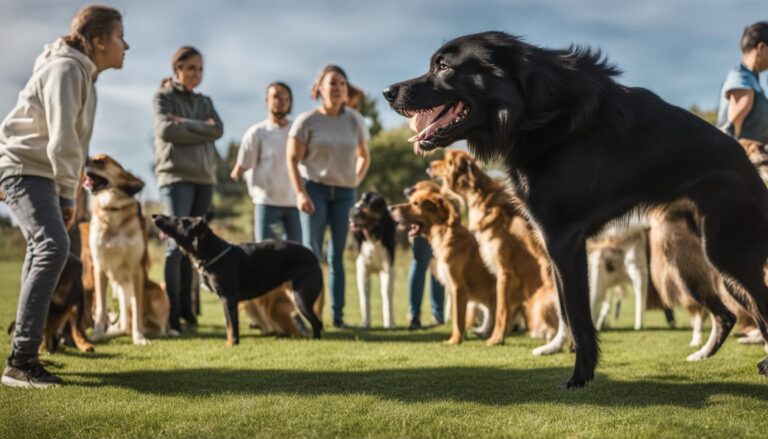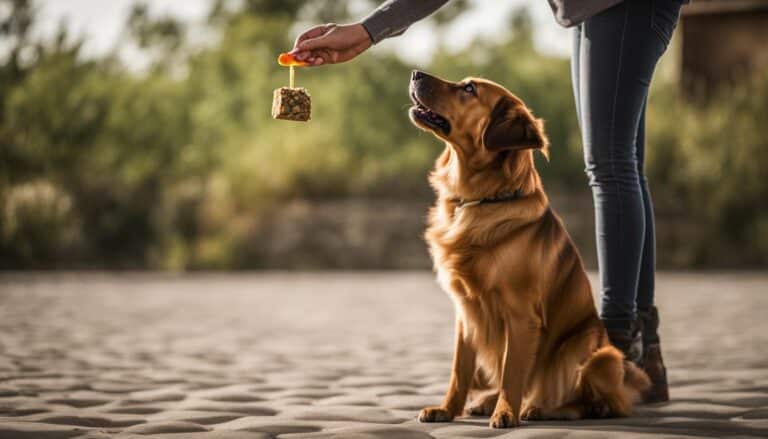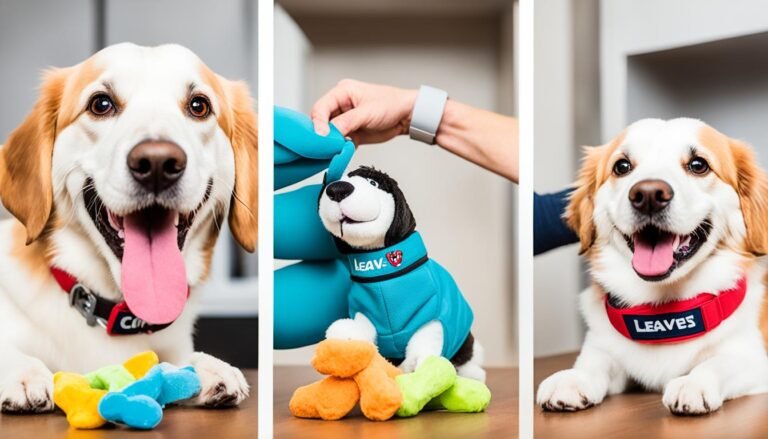How to Train a Pitbull to Not Be Dog Aggressive
As a pitbull owner, you understand the unfair stigma that often surrounds these incredible dogs. You know that beneath their muscular physique lies a heart full of love and loyalty. Yet, the challenge of training your pitbull to not be dog aggressive can be overwhelming at times.
But fear not, because in this article, we’re going to explore effective training techniques and behavior modification strategies that can transform your pitbull into a well-behaved and sociable companion. With dedication, patience, and a whole lot of love, you can help your pitbull overcome their breed’s reputation and thrive in a world filled with positive interactions.
From socialization to obedience training, we’ll guide you through each step of the process, providing you with practical pitbull training tips and insights. Together, we’ll unravel the mysteries of pitbull behavior and equip you with the knowledge and skills needed to foster a harmonious relationship with your furry friend.
So, let’s delve into the world of training your pitbull to not be dog aggressive and embark on a journey that will strengthen the bond between you and your beloved companion. The power to transform your pitbull’s behavior lies in your hands, and we’re here to support you every step of the way.
The Importance of Early Socialization
Early socialization plays a vital role in shaping the behavior of pitbull puppies. By exposing them to various experiences, individuals, and environments during their critical developmental stage, you can help prevent dog aggression in pitbulls.
When it comes to socialization, it’s important to introduce your pitbull to different dogs and people in a controlled and positive manner. This can include supervised playdates with well-behaved dogs, visits to dog parks, and interactions with friends and family members. Encourage gentle and friendly interactions, and reward your pitbull for calm and non-aggressive behavior.
Pitbull socialization techniques:
- Expose your pitbull to different environments, including busy streets, parks, and public places.
- Introduce your pitbull to various sounds, such as traffic noise, sirens, and household appliances, to acclimate them to different auditory stimuli.
- Gradually expose your pitbull to different types of animals, such as cats, rabbits, and small pets, in a safe and supervised setting.
- Provide opportunities for positive interactions with children of different ages to help your pitbull become comfortable around them.
During socialization, focus on teaching your pitbull obedience commands. Basic commands like sit, stay, and leave it can help establish control and prevent potential aggressive behavior. Consistency and reinforcement are key to ensuring your pitbull understands and obeys these commands in different situations.
Remember, maintaining a positive and cheerful attitude throughout the socialization process is crucial. Your pitbull will pick up on your emotions, so provide reassurance and rewards for good behavior. This will help create a solid foundation for your pitbull’s behavior and minimize the risk of dog aggression.
Training Techniques for Pitbulls
Pitbull training requires a positive reinforcement approach to encourage desired behaviors and discourage aggression. By using rewards such as treats, praise, and playtime, you can motivate your pitbull to respond to obedience commands and exhibit good behavior. Positive reinforcement not only establishes a strong bond between you and your pitbull, but it also helps them associate training with positive experiences.
Obedience training is an essential aspect of pitbull training. Teaching your pitbull basic commands such as sit, stay, and come can instill discipline and improve their overall behavior. Consistency and patience are key when training a pitbull, as it may take time for them to grasp the commands and respond consistently. Stay dedicated to the training process, and you will see progress over time.
Socialization through Dog Sports
Engaging your pitbull in dog sports can provide mental stimulation and help channel their energy in a productive way. Activities like agility training, flyball, or even participating in organized obedience competitions can not only provide physical exercise but also enhance their responsiveness to commands and improve their overall behavior. These activities create a positive outlet for their energy and instill a sense of purpose in their training.
Consistency and Patience
When training a pitbull, consistency and patience are essential. Set a regular training schedule and stick to it, ensuring that you reinforce positive behaviors consistently. Be patient with your pitbull’s progress, as each dog has its own learning pace. With time and dedication, your pitbull will develop the desired behaviors and become an obedient and well-mannered companion.
Managing Pitbull Aggression
If your pitbull exhibits aggressive behavior, it is essential to actively manage and control their aggression. One approach is to carefully socialize your pitbull with other dogs, using techniques such as controlled introductions and controlled play sessions.
Allowing your pitbull to interact with other dogs in a controlled environment can help them become more comfortable and less reactive. Start by introducing your pitbull to calm and friendly dogs, gradually increasing the intensity of the interactions over time.
Enrolling your pitbull in canine certification courses or working with a professional trainer can also be beneficial. These experts can provide guidance on how to address aggressive tendencies and provide structured training to modify behavior.
Remember, punishment or harsh methods should be avoided, as they can escalate aggression in pitbulls. Instead, focus on positive reinforcement training techniques, rewarding good behavior and redirecting negative behavior. Consistency and patience are key when managing pitbull aggression.

Understanding Body Language and Communication
One of the keys to training a pitbull to not be dog aggressive is understanding their body language. By learning to read your pitbull’s body language, you can gain valuable insights into their emotions and potential triggers for aggression. Recognizing signs such as growling, barking, pacing, stiff posture, or a curled lip can help you intervene early and prevent potential aggressive situations.
When your pitbull exhibits these behaviors, it is important to stay calm and assess their environment for any potential stressors. Investigate whether there are any other dogs nearby that may be causing agitation or if there is an unfamiliar person or object that is making your pitbull feel threatened. By identifying the source of their discomfort, you can modify their environment to alleviate stress and minimize the risk of aggression.
By understanding your pitbull’s body language, you can effectively communicate with them and respond to their needs. This helps create a sense of trust and security, which is essential in training them to be non-aggressive. If you notice signs of distress in your pitbull, take steps to remove them from the situation or provide a safe space for them to retreat to. It is crucial to prioritize their emotional well-being in order to prevent aggressive behaviors from escalating.
Remember, every pitbull is unique, and their body language may vary. Spend time observing and interacting with your pitbull to develop a deeper understanding of their individual cues and signals. This will enable you to build a strong bond with your dog and effectively address any potential aggression issues.

By becoming fluent in your pitbull’s body language, you can successfully navigate their emotions and provide them with the support they need. This not only contributes to their overall well-being but also helps foster a harmonious relationship between you and your four-legged companion.
Leash Training and Bite Prevention
Leash training is a crucial aspect of pitbull behavior management, providing both control and safety for you and your furry friend. By teaching your pitbull to walk calmly on a leash and respond to commands, you can prevent aggressive behaviors and promote a positive walking experience.
To start leash training, introduce your pitbull to the leash gradually, allowing them to sniff and explore it before attaching it to their collar or harness. Begin by walking in a familiar, low-distraction environment, using short and positive training sessions. Encourage your pitbull to walk beside you, rewarding them with treats or praise for good behavior. Remember to use a sturdy leash appropriate for your pitbull’s size and strength.
In addition to leash training, preventing biting incidents is crucial for a well-behaved pitbull. Start early by discouraging biting behaviors through proper training and redirection. When your pitbull bites, gently say “no” and replace the inappropriate item with an appropriate chew toy. Reward your pitbull with praise or a treat when they choose to chew on the correct items. This positive reinforcement will help channel their energy and prevent biting incidents in the future.
Establishing yourself as the pack leader is essential in preventing aggression and promoting good behavior in your pitbull. Set clear boundaries and consistently enforce rules and commands. Use positive reinforcement, such as treats, praise, and playtime, to reward your pitbull for good behavior. By being consistent, patient, and firm, you can ensure your pitbull becomes a well-behaved and non-aggressive companion.






